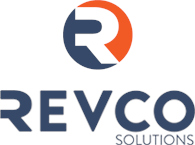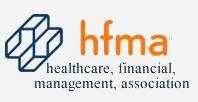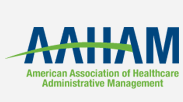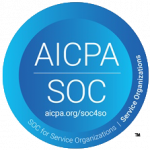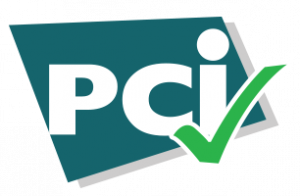
In today’s complex healthcare reimbursement landscape patient authorization forms may be an administrative hassle—but they’re also a critical step in your intake process for ensuring timely and full reimbursement. Especially when those patient auth forms are payer-specific. As insurance carriers evolve their processes to mitigate payouts and increase documentation requirements, providers must stay ahead of these changes to avoid claim denials and revenue leakage.
The Increasing Role of Payer-Specific Patient Authorization Forms
Authorization forms—especially payer-specific versions—have become a standard requirement across many major commercial insurers. These forms often mimic traditional Assignment of Benefits (AOB) forms, but they are not interchangeable. While a general AOB authorizes a provider to receive payment directly from the insurer and appeal denials, many payers now require their own version of an authorization or representative form before they will even process claims or appeals.
For example, Aetna implemented its Authorized Representative Form for fully insured plans back in October 2020 and for self-funded plans in January 2021. But even in 2025, this form continues to trip up providers because:
- It’s not clearly explained on their website.
- It cannot be substituted with a provider’s own AOB.
- Claims without this exact form will not be reviewed, even in appeal.
What’s at Stake for Providers?
Let’s be clear: missing or improperly completed payer-specific forms can result in more than just delayed payments—they can cause:
- Claim denials that are irreversible once the payer’s deadline has passed.
- Inability to pursue appeals on behalf of the patient.
- Revenue loss that could have been avoided with proper documentation at intake.
Take the Aetna example again: if the Authorized Representative Form isn’t properly completed and submitted within 180 days of the original claim decision for self-funded plans, the provider loses the ability to have the claim reconsidered—even if it was incorrectly denied.
Other major payers such as UnitedHealthcare and Cigna have also started implementing variations of this requirement, particularly for out-of-network claims or patient advocacy submissions.
Best Practices to Protect Your Revenue
- Collect the Right Form at Intake
Train front desk or patient access teams to identify the patient’s insurance and check if a payer-specific form is required. If yes, collect and complete it before services are rendered when possible. - Stay Organized
Maintain a digital library of up-to-date forms for major payers. Keep notes on how each one should be completed (e.g., signature requirements, effective dates, expiration timelines). - Audit for Accuracy
Ensure that patient signatures, dates, and fields align with the payer’s internal criteria. A small error—like an incorrect checkbox or mismatched date—can nullify the form. - Educate Your Teams
Many claim denials happen not due to medical necessity or coding issues, but administrative oversights. Make sure scheduling, intake, billing, and appeals teams are trained and aligned on form requirements. - Know Your Patient Base
Before marketing services or entering new payer networks, ask: Does your patient population include a large number of members with these plans? Are your physicians credentialed with these payers? Understanding your demographics helps prevent marketing to unreachable populations—and wasting resources in the process.
Common Mistakes on These Forms That Can Derail Your Claims: What to Watch For
Unfortunately, even when providers think they’ve submitted the right documentation, small administrative missteps with payer-specific authorization forms can still lead to claim delays or outright denials. Unfortunately, these mistakes are easy to make—and hard to recover from once the denial window has closed.
Below are three of the most common and costly errors we see when it comes to payer-specific Authorized Representative forms, along with tips to prevent them:
- Missing or Incomplete Patient Signature:
Most payers require the patient’s signature on their own authorized representative form, even if the provider is submitting the appeal on the patient’s behalf. This signature serves as the legal consent for the provider to access PHI and act as their advocate in the appeals process.
What to do:
- Verify the patient has signed before sending any appeal documentation.
- For remote patients, implement secure e-signature tools that meet HIPAA standards.
- Submitting an Outdated or Expired Form:
Many payer-specific authorization forms are valid for a limited period—typically one year. If your staff pulls a copy from an outdated library or reuses a prior-year form, it may no longer be accepted.
What to do:
- Check the version date on the form (usually found in the footer).
- Maintain a central digital repository of current payer forms, updated quarterly.
Encourage team members to use direct links to payer websites
- Assuming One Form Covers All Dates of Service:
Some payers require separate authorization forms per episode of care, especially for high-cost procedures or out-of-network cases. Assuming a blanket form covers multiple claims could result in unexpected denials.
What to do:
- Confirm the payer’s policy on whether the authorization is:
- Single-use
- Date-specific
- Plan-year-specific
- If the treatment spans multiple months or specialties, obtain a new form as needed.
Revco Is Here to Help
At Revco Solutions, we understand how frustrating these administrative hurdles can be. That’s why we support our provider clients by:
- Supplying up-to-date payer-specific forms and documentation guides.
- Offering training for staff to prevent common errors and rejections.
- Assisting in patient advocacy cases, helping to recover revenue that would otherwise be lost due to form-related denials.
In a reimbursement environment that’s constantly shifting, it’s not enough to submit claims correctly—you need to know what paperwork payers require before they’ll even look at the claim. Let us help you stay one step ahead.
